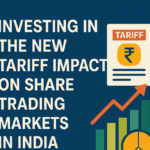Initial Public Offerings (IPOs) have become one of the most discussed investment avenues in India’s stock market. With the rise in retail participation and multiple IPOs hitting the market every month, having a clear strategy for investing in IPOs is more important than ever. In this guide, we’ll walk you through key strategies to invest smartly in IPOs, avoid hype-driven mistakes, and build long-term wealth through listed stocks.
What Is an IPO?
An IPO is when a privately held company offers its shares to the public for the first time through the stock exchange. It helps the company raise capital, while investors get an opportunity to invest early in a business’s potential growth.
Why IPOs Are Attractive to Indian Investors
- Chance to buy shares before they list on NSE/BSE
- Listing gains (quick profits on listing day)
- Long-term wealth creation if the business performs well
- Participation in promising new-age sectors (tech, fintech, etc.)
But every IPO isn’t a gold mine. That’s where strategy comes in.
1. 📊 Understand the Company Fundamentals
Before applying for any IPO, analyze the company’s:
- Revenue and Profit Trends
- Debt Position
- Market Share & Competitive Advantage
- Sector Growth Outlook
👉 You can get this data from the Red Herring Prospectus (RHP) available on SEBI or NSE India.
2. 🧾 Read the Red Herring Prospectus (RHP)
The RHP is your IPO playbook. It includes:
- Company overview
- Financial statements
- Risks and litigation
- Promoter background
- Use of IPO funds
💡 Pro Tip: If the majority of IPO proceeds are for debt repayment or promoter exit, proceed with caution.
3. 📈 Evaluate the Valuation and Price Band
Compare the IPO’s price-to-earnings (P/E) ratio with industry peers. If the IPO is overpriced compared to competitors, you may want to skip or invest with caution.
🧠 Look for IPOs that offer value and growth — not just hype.
4. 💸 Track the Grey Market Premium (GMP)
GMP is an unofficial indicator of demand for an IPO in the grey market before listing.
✅ A high GMP can signal strong listing gains,
🚫 But don’t base your decision only on GMP — it can be manipulated.
📌 Tip: Use trusted sources like Moneycontrol GMP Page to check real-time trends.
5. 🛡️ Invest Through ASBA (Compulsory in 2025)
From 2025, SEBI has made ASBA (Applications Supported by Blocked Amount) mandatory. This:
- Keeps your funds in your account until allotment
- Prevents misuse of third-party UPI links
- Ensures transparent IPO transactions
💡 Use your bank’s net banking or UPI ASBA-enabled platforms to apply safely.
6. 👥 Choose the Right Investor Category
Indian IPOs typically have 3 investor categories:
- Retail Individual Investors (RII) – Up to ₹2 lakh
- High Net-worth Individuals (HNI/NII) – Above ₹2 lakh
- Qualified Institutional Buyers (QIBs)
If you’re a retail investor, split your applications smartly across family members to improve allotment chances.
7. 📅 Watch the Anchor Investor Activity
Anchor investors (large institutions) invest before the IPO opens to the public. If strong names like SBI Mutual Fund, LIC, or foreign funds are anchoring, it’s often a sign of confidence.
🔍 Check the list in RHP or SEBI’s daily updates.
8. 🧠 Avoid the Herd Mentality
Many retail investors jump into IPOs due to:
- Hype on social media
- Influencer promotions
- FOMO from friends and groups
But without checking the fundamentals, you risk getting stuck in a poor-quality stock post listing.
📉 Strategy: Wait, analyze, and only invest when confident — even if it means skipping popular IPOs.
9. 📅 Listing Day Strategy – Sell or Hold?
Should you book profits or hold for the long term?
👉 Sell on listing if:
- GMP-driven demand
- Overvaluation concerns
- Weak fundamentals
👉 Hold if:
- Solid growth potential
- Reasonable valuation
- Sector tailwinds
10. 📈 Monitor Post-Listing Performance
After listing, track:
- Quarterly results
- Management commentary
- Sector developments
- Institutional buying or selling
💡 Good IPO picks can deliver strong compounding if held patiently with monitoring.
Expert Tip: Diversify Your IPO Portfolio
Don’t put all your capital in a single IPO. Apply in 3-4 quality IPOs in a quarter based on:
- Sector variety
- Financials
- Management credibility
This reduces risk and improves your chances of getting high performers.
Conclusion
Investing in IPOs can be highly rewarding — but only with a disciplined strategy. Don’t chase every opportunity. Instead, study the company, understand the risks, track real indicators like RHP and GMP, and allocate capital wisely.






